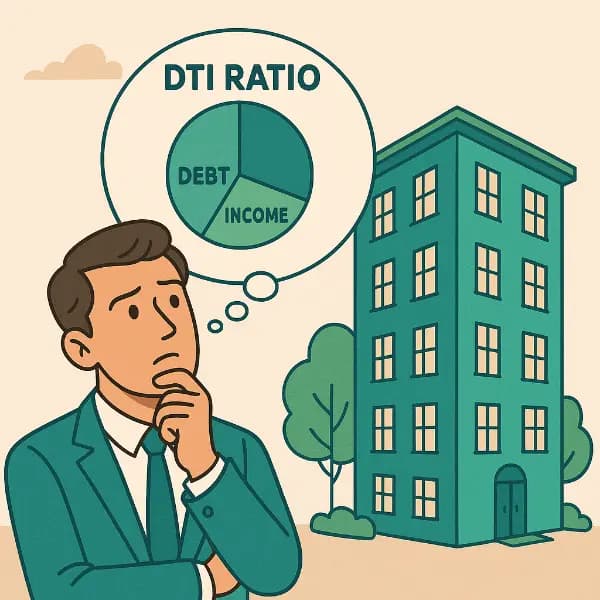

Renting an apartment is not always easy. It involves critical factors such as your monthly gross income, utilities, insurance, and any existing debts to determine affordability. That's where the Debt-to-Income Ratio Calculator for Apartments comes in to help you determine whether you can afford a specific apartment based on your current financial situation.
We will cover: What is Debt-to-income (DTI) ratio, and its formula? What is the Apartments DTI Ratio Calculator? And how do you use it?

Debt-to-Income Ratio (DTI) is a financial metric that compares your total monthly debt payments to your monthly gross income, represented as a percentage. Most lenders and landlords use it to determine how much of your monthly income goes toward paying off debts.
Formula:
DTI (%) = (Total Monthly Debt Payments / Gross Monthly Income) × 100The Debt-to-Income Ratio Calculator for Apartments is a powerful tool used to determine if you can afford a rental apartment. It performs multiple calculations and applies smart logic behind the scenes to give you a detailed breakdown and recommendations, including risk assessment, total DTI, rent-to-income ratio, housing expenses, and more.
Step 1: Fill the fields
7,500 dollars per month)800 dollars)600 dollars).60 dollars)1,100 dollars)30% (e.g., 25%)43% (default is 43%)800 dollars)12 months)Step 2: Review Result
19.47%34.13%Low Risk1,875 dollars4,940 dollars1,600 dollarsSummary:
| Metric | Your Value | Recommended | Assessment |
|---|---|---|---|
| Rent-to-Income | 19.47% | < 25% | ✓ Good |
| Total DTI | 34.13% | < 43% | ✓ Good |
| Monthly Rent | 800 dollars | ≤ 1,875 dollars | ✓ Affordable |
If you are renting an apartment, consider these ideal ratios:
These limits help reduce financial stress and boost your chances of approval.
Yes, the calculator includes housing-related monthly obligations such as rent, utilities, and renter’s insurance
Upfront costs are the initial expenses you must pay before moving into an apartment. This typically includes the first month's rent and a security deposit. Some landlords may also charge an application fee or other one-time charges.